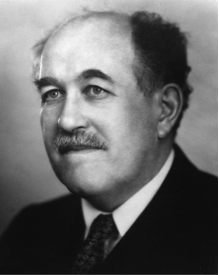News
Physics in Frankfurt
Posted by: Joachim Frank |
July 24, 2018 |
No comment

Horst Schmidt-Boecking 1939–
In Frankfurt, where I was recently on the occasion of the 350th Anniversary of Merck in nearby Darmstadt, I met with Horst Schmidt-Boecking, for 9 years my classmate in high school (Fuerst Johann Moritz Gymnasium in Siegen). My high school class was quite unusual: 4 of the 22 who made it to the Abitur chose to study Physics: one became an astrophysicist, one (myself) a biophysicist, and one went into the coordination of Space missions. At another place I have attributed this high percentage to the inspiring lectures of our Physics teacher, Willy Schroeder.
Horst, retired since 2004, worked in the area of nuclear physics and spectroscopy and was a Professor at the Physics Department of the Johann Wolfgang von Goethe University in Frankfurt. Before talking to him I was not aware of the fact that this university – named after Frankfurt’s most famous citizen — was the place where an unusual number of future Nobel Laureates taught and conducted research: Max von Laue, Max Born, Hans Bethe, Otto Stern, Gerd Binning, Horst Stoermer, and Peter Gruenberg. Max Born later went to Goettingen and contributed to Goettingen’s fame in the Natural Sciences of the 20s and early 30s, until the rise of Antisemitism under Hitler led to the expulsion of many scientists and artists and tore the fabric of science and culture apart.

Otto Stern 1888-1969
In the years since his retirement, Horst’s interest turned to the life and professional career of the physicist Otto Stern, who received the Nobel Prize in Physics for the discovery of directional quantum effects in atoms exposed to a magnetic field. One of the fundamental discoveries was made with an apparatus, designed together with Walther Gerlach, in which a beam of silver atoms was exposed to an inhomogeneous magnetic field. Wikipedia: “The Stern–Gerlach experiment demonstrated that the spatial orientation of angular momentum is quantized.”
Little was left of the original apparatus, but Horst managed to get in touch with Stern’s descendants in California who had kept some of it in the garage. They also gave him access to Stern’s letters, which shine light not only on his professional Werdegang in a tumultuous period of German history, but also on his friendships with some of the beacons of physics in Germany at the time, including Max von Laue and Hans Bethe. The edited collection of the letters has now come out (Otto Stern’s Gesammelte Briefe I, H. Schmidt-Böcking, A. Templeton, W. Trageser, Springer Verlag 2018) along with the biography Horst and a co-editor have been spending years to compile (Otto Stern – Physiker, Querdenker, Nobelpreistraeger. Horst Schmidt-Boecking and Karin Reich, Societas Verlag). Interesting in this context is that Otto Stern was related to the historian Fritz Stern, who until his death (in 2016) was a professor at Columbia University and a good friend of Eric Kandel.



